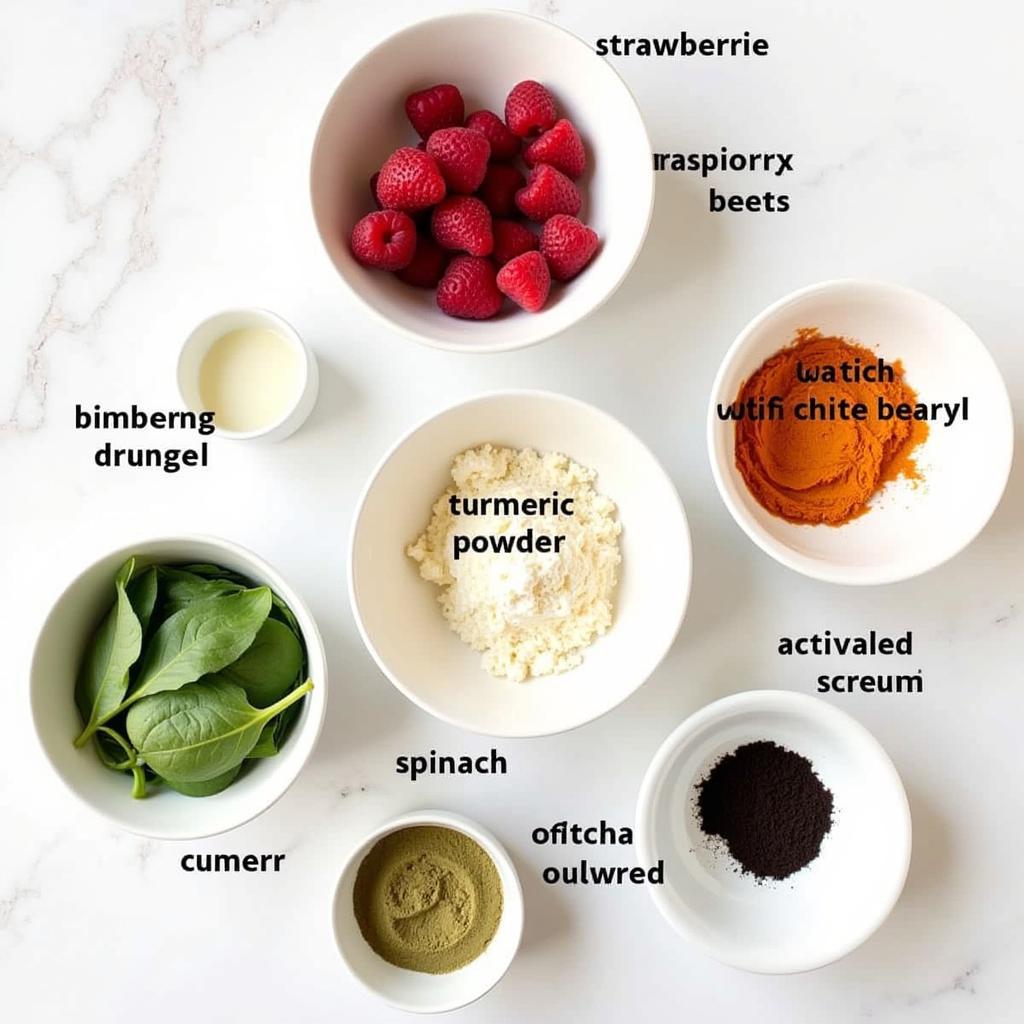Natural frosting colors are a fantastic way to avoid artificial dyes and still achieve vibrant hues for your baked creations. Whether you’re looking for a subtle pastel or a rich, deep color, there are several natural ingredients that can be used to transform your frosting into a colorful masterpiece. This guide will explore the secrets to achieving beautiful colored frosting using nature’s palette.
Unveiling Nature’s Colorful Secrets for Frosting
Many people are looking for ways to reduce artificial ingredients in their diets, and food coloring is often high on that list. Luckily, there are numerous natural alternatives that can create stunning colored frosting without food coloring. These options range from vibrant fruits and vegetables to spices and powders, each offering a unique spectrum of colors and flavors. Let’s delve into these natural coloring agents and discover how they can enhance your frosting game.
Harnessing the Power of Fruits and Vegetables
Fruits and vegetables are a powerhouse of natural colors, and they can be easily incorporated into frosting. For a vibrant pink or red, consider using pureed strawberries, raspberries, or beets. These ingredients not only impart color but also add a subtle sweetness and a unique flavor profile. For a sunny yellow hue, try using turmeric or saffron. Spinach and kale can create a delicate green, although their flavor may be more pronounced, requiring adjustments to the frosting’s sweetness. Remember to strain the purees to remove any seeds or pulp, ensuring a smooth and consistent texture.
Exploring the World of Spices and Powders
Spices and powders offer another avenue for achieving naturally colored frosting. Cocoa powder is a classic choice for creating rich brown and chocolate-flavored frosting. Cinnamon can add a warm, earthy tone, while matcha powder creates a beautiful green hue with a distinct flavor profile. For deeper shades, consider using activated charcoal, which creates a dramatic black frosting perfect for Halloween or other themed events.
 Natural Frosting Ingredients: Fruits, Vegetables, Spices
Natural Frosting Ingredients: Fruits, Vegetables, Spices
Creating Your Own Naturally Colored Frosting: A Step-by-Step Guide
Now that we’ve explored the various natural coloring agents, let’s dive into the process of creating your own naturally colored frosting. The basic process involves creating a base frosting, preparing your chosen natural coloring agent, and then incorporating it into the frosting.
-
Prepare Your Base Frosting: Start with your favorite frosting recipe, whether it’s buttercream, cream cheese, or whipped cream. A white or light-colored frosting is ideal as it provides a neutral canvas for your natural colors. If you’re curious about achieving specific colors with traditional food coloring, you might find our guide on how to make gold colored frosting with food coloring helpful.
-
Prepare Your Natural Coloring Agent: If you’re using fruits or vegetables, puree them and strain the mixture to remove any solids. For spices and powders, ensure they are finely ground to prevent any gritty texture in the final product. For a guide on using gel food coloring as an alternative to liquid, check out our article on how much gel food coloring to use instead of liquid.
-
Incorporate the Color: Gradually add the natural coloring agent to your base frosting, mixing thoroughly until the desired color is achieved. Start with a small amount and add more as needed, as some natural colors are quite potent. You may find our guide on how to make grey from food coloring useful for understanding color mixing principles, even when using natural ingredients.
-
Adjust for Flavor: Some natural coloring agents, like spinach or beets, may have a distinct flavor. You can adjust the sweetness or add complementary flavors like vanilla or lemon extract to balance the taste.
Tips and Tricks for Natural Frosting Success
- Intensity Control: The intensity of the color depends on the amount of natural coloring agent you add. Start with small amounts and gradually increase until you reach the desired shade.
- Flavor Pairing: Consider the flavor profile of your chosen natural coloring agent and how it will complement the overall flavor of your dessert.
- Storage: Naturally colored frosting may be more sensitive to light and temperature changes. Store it in an airtight container in the refrigerator and allow it to come to room temperature before using. You might be interested in knowing if food coloring is safe for pets; our article on can dogs have food coloring provides more information.
Conclusion
Creating colored frosting without food coloring opens up a world of possibilities for natural and vibrant desserts. By utilizing the power of fruits, vegetables, spices, and powders, you can achieve a stunning array of colors while avoiding artificial dyes. Experiment with different combinations to find your favorite hues and flavors, and enjoy the process of transforming your frosting into a work of art.
FAQ
- Can I use frozen fruits for coloring frosting?
- How do I make a pastel color with natural ingredients?
- What’s the best way to store naturally colored frosting?
- Can I combine different natural coloring agents?
- Will natural coloring affect the texture of my frosting?
- How can I make a vibrant blue frosting without artificial colors?
- Are there any natural alternatives for creating a shimmery or metallic effect in frosting?
For further questions regarding flesh-toned icing, see our article how do you make flesh colored icing.
Need help with your frosting project? Contact us at 0373298888, email [email protected], or visit us at 86 Cầu Giấy, Hà Nội. Our customer service team is available 24/7.
